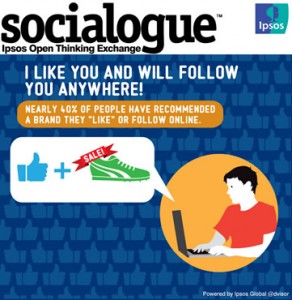 Who says emotions don’t matter? Not brand managers. When consumers are emotionally involved in a brand, that brand has reached an important point of success. Emotional involvement in a brand leads to brand loyalty, brand advocacy, and brand guardianship that money can’t buy.
Who says emotions don’t matter? Not brand managers. When consumers are emotionally involved in a brand, that brand has reached an important point of success. Emotional involvement in a brand leads to brand loyalty, brand advocacy, and brand guardianship that money can’t buy.
Word-of-mouth marketing by consumers who are emotionally connected to a brand is extremely powerful. Don’t believe me? Ask the marketing team at Harley Davidson or Apple. They’ll tell you how important emotional involvement in a brand is.
Of course, emotional involvement in a brand doesn’t happen overnight. It requires a brand that commits to the three steps of brand building: consistency, persistence, and restraint. It also requires the development of products or services under the brand umbrella that live up to the brand promise and meet consumers’ expectations for the brand again and again. Consumer emotions evolve over time as they experience a brand over and over. If the brand fails to live up to its promise or doesn’t meet consumer expectations, those consumers will feel let down. They’ll turn away from the brand in search of one that does meet their expectations in every interaction. In other words, they’ll seek out a brand that keeps its promise.
In that regard, consumers’ relationships with brands and emotional connections to brands work very similarly to how people’s relationships and emotional connections with each other work. If a person doesn’t meet your expectations or doesn’t keep his or her promises to you, that relationship will likely be in jeopardy. The same things happen with brands, and consumers are far less likely to give brands a second chance than they are to give other people a second chance.
It’s easier for some brands to foster emotional involvement than it is for others by nature of the types of products offered. For example, some consumers place a high value on having a sense of freedom. A brand like Harley Davidson with its product line of motorcycles lets consumers do exactly that. For other brands, creating an emotional connection requires some creativity. Apple did it by making the audience of “creative” computer users feel like a special group or “family” separate from those who use computers for spreadsheets and other less creative tasks. Developing that sense of belonging enabled Apple customers to become emotionally connected to the brand.
The point is that any brand can create experiences and opportunities for consumers to become emotionally involved in the brand, even if those opportunities are as simple as consistently meeting consumer expectations and living up to the brand promise. Sometimes, trust is all it takes to drive an emotional connection between a brand and consumers. With that in mind, building brand trust should always be a top priority for every brand.
Image: Terry Johnston

 Around the world, adults who spend time online are actively liking, following, talking about, and recommending brands. A study by Ipsos Open Thinking Exchange (Ipsos OTX) and Ipsos Global @dvisor puts some numbers to those activities.
Around the world, adults who spend time online are actively liking, following, talking about, and recommending brands. A study by Ipsos Open Thinking Exchange (Ipsos OTX) and Ipsos Global @dvisor puts some numbers to those activities. American mothers are very active online, and they’re also very influential. They’re reading, writing, and sharing product reviews and opinions across social networks with family, friends, and strangers. Brands are often part of the online conversations happening between people around the world, but did you know how popular social media really is for American moms? A great
American mothers are very active online, and they’re also very influential. They’re reading, writing, and sharing product reviews and opinions across social networks with family, friends, and strangers. Brands are often part of the online conversations happening between people around the world, but did you know how popular social media really is for American moms? A great  Google Street View
Google Street View